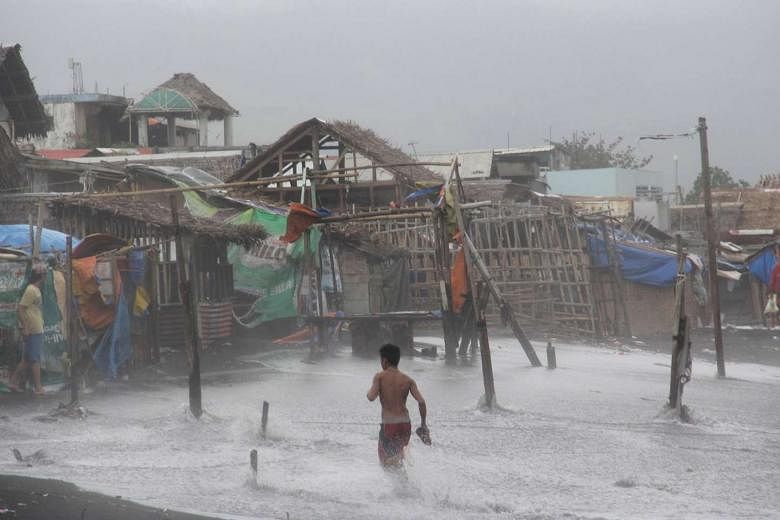BOSTON (BLOOMBERG) - It's been a record year for powerful hurricanes and typhoons in the Pacific Ocean, and they just keep coming.
Typhoon Melor, which peaked at Category 4 strength on the US Saffir-Simpson scale, weakened as it moved through the Philippines, but chances are it will have company before it finally fades away.
"There is another feature already developing south of Guam," said Mr Dan Kottlowski, a meteorologist with AccuWeather in State College, Pennsylvania. "In a few days, we will probably have another tropical storm or typhoon."
The Pacific, in the midst of a strong El Nino, has warmer- than-normal water across large parts of the basin. This has allowed hurricanes and typhoons to spawn and grow from one end of the ocean to the other. While the Eastern Pacific's hurricane season officially ended on Nov 30, storms can appear all year across the basin.
The Accumulated Cyclone Energy index, which meteorologists use to plot the intensity of a tropical season, set a record in the Pacific this year, said Mr Phil Klotzbach, lead author of Colorado State University's Atlantic seasonal hurricane forecast.
The index across the Pacific was 765 through Tuesday (Dec 15), breaking the old mark of 760 set in 1992, he said.
In addition, the Northwestern Pacific has had 16 major storms, reaching Category 3 or higher on the Saffir-Simpson scale, which is also a record, Mr Klotzbach said. The previous mark was 15 in 1958 and 1965.
On top of that, the Northern Hemisphere saw 26 Category 4 or 5 systems, the strongest on the scale, breaking the record of 18 set in 1997 and 2004, he said.
Most other countries use 10-minute wind measurements, so their wind speed and strength estimates differ from the United States.
The Saffir-Simpson scale is based on a one-minute measurement.
Regardless, it has been a "phenomenal year" for storms across the Pacific, Mr Kottlowski said.
Even with Melor's power, the largest threat for the Philippines was forecast to be heavy rain. Mr Kottlowski estimated as much as 30cm had drenched portions of the country.
While Melor missed many of the Philippines' most heavily populated areas, Mr Kottlowski said the next storm should be watched because it might follow a different path.

